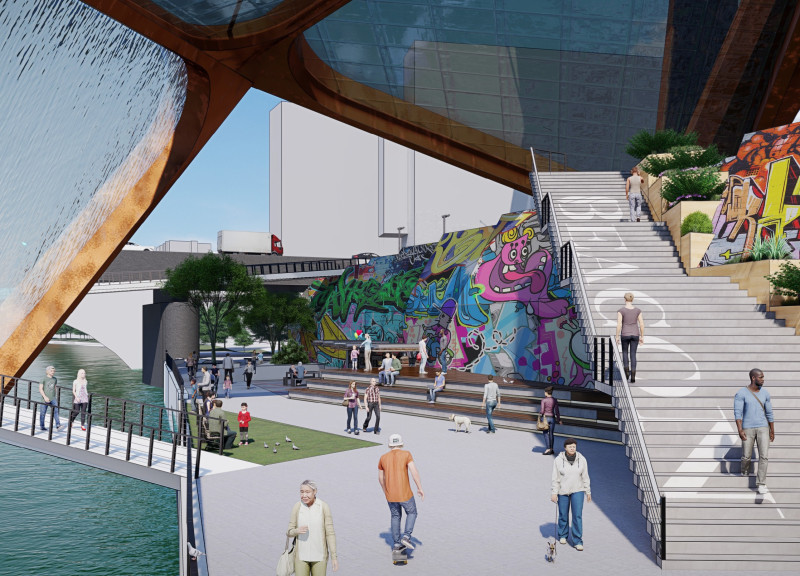5 key facts about this project
The Beacon reflects an architectural ethos centered on modern living, characterized by its dynamic form and materiality. The structure integrates glass, steel, and natural materials, emphasizing transparency and structural integrity. By providing a visually appealing environment, the building connects its occupants to the surrounding cityscape while promoting interaction with pedestrian spaces.
Unique Design Approaches
The design of The Beacon incorporates several unique features that distinguish it from conventional projects. The building’s twisting silhouette symbolizes movement and modernity, diverging from the typical rectilinear forms prevalent in urban architecture. This fluidity contributes to a sense of vitality and presence in the city.
Another notable aspect is the emphasis on community space. The Beacon includes public areas such as green rooftops and communal gardens, which serve to draw residents and visitors together. These spaces are designed not just for aesthetics but also to promote biodiversity and ecological awareness. The integration of vertical gardens and rainwater harvesting systems exemplifies the project’s commitment to sustainability.
The building’s multifunctional layout is essential to its identity. By combining various uses – from office spaces to community centers – The Beacon addresses the diverse needs of urban inhabitants. This mixed-use approach enhances economic vitality in the surrounding area and supports an inclusive urban environment.
Architectural Details and Function
The architectural details of The Beacon further underscore its innovative approach. The façade, comprised primarily of glass panels, maximizes natural light while maintaining energy efficiency. The structural system utilizes steel to support the dynamic forms and ensure longevity.
The ground-level design prioritizes pedestrian access, with large entrances that invite exploration and interaction. Inside, the layout facilitates movement between various spaces, encouraging a fluid transition from living areas to communal setups. Each level is equipped with strategically placed staircases and open areas that promote social interaction, fostering a sense of community among residents.
In summary, The Beacon at 2301 Market Street is a notable example of contemporary architecture that blends functionality with environmental sustainability. Interested readers are encouraged to explore additional details, including architectural plans, architectural sections, architectural designs, and architectural ideas, to gain a deeper understanding of the project and its implications for urban architecture.


























